This is now the third installment of “Where Archaeology Meets The Bible”. The first installment on the Kassite Period can be read HERE. The first for the Middle Babylonian Period can be read HERE.
Below I will be examining a number of texts from the Akkadian and Babylonian time of domination in the Ancient Near East (ANE). As I noted in previous posts, almost all of my data was pulled from Context Of Scripture, a 3 volume set containing archaeological data from the ANE. I would also like to note that many of these same findings can be found online at biblical archaeology sites like http://www.biblicalarchaeology.org/
After the initial skirmishes occurred between Assyria and Israel there was time of relative peace in Israel. This was the scene during Amos’ ministry when Jeroboam II was king over Israel (786-746BC). The Assyrian powers were focused on battles outside of Israel and Israel had been able to secure the borders under the reign of Jeroboam (2 Kings 14:25). However, Amos predicted the fall of Israel that was to come and his prophesy of doom was not well received by Jeroboam (Amos 7:10-17). His prediction of destruction was timely, as the peace in Israel soon began to turn to turmoil.
As I did in the previous post, here is a timeline of the events being examined. We start today on the top portion of this timeline right after Jeroboam II and before the Assyrian Destruction in 721.
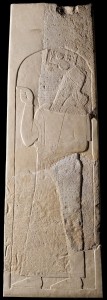 Iran Stela of Tiglath-Pileser III
Iran Stela of Tiglath-Pileser III
The military and literary activity in Assyria picked up during the reign of Israel’s king, Menahem (764-737BC). In an Assyrian record, the Iran Stela of Tiglath-Pileser III (744-724BC), a heavy tribute is being placed on a list of nations. The lands listed for tribute being forced upon them cover the four borders and center of Israel. Among the list of kings is Menahem “of Samaria.” The tribute being forced upon them is even heavier than the one described in the Black Obelisk, when Jehu was paying tribute. Tiglath was demanding of them “a tribute of silver, gold, tin, iron, elephant hides, elephant tusks (ivory), blue-purple (and) red-purple garments, multi-colored garments, linen garments, camels, (and) she-camels.”
In the Calah Annals which cover 17 years of Tiglath’s reign, Menahem of Samaria is depicted once again paying tribute.
“I received the tribute of…Rezin, the Damascene, Menahem, the Samarian, Hiram, the Tyrian….”
[COS 2, 285, 2.117A]
This tribute record was describing the end of Tiglath’s reign (744-727BC). The tribute placed on Israel may have gone unrivaled by all previous tributes. On top of the previous items he demanded, he was now asking for birds, sheep, cattle, horses, mules, camels, boxes, and other items from the royal treasure.
The heavy tributes are also paralleled in the biblical account in 2 Kings 15:19-21. At this time Menahem is described as purposefully planning to strengthen the alliance between Assyria and Israel, but it is more likely that this was an effort to avoid destruction at the hands of Tiglath. In verses 19-21 it is mentioned that “Pul” (Aka Tiglath-Pileser III) came against the land. The tribute was so large that Menahem requested funds be taken from the mighty men of the land in order to pay the king of Assyria. Once Pul received his tribute he was said to have left the land. The heaviness of Tiglath-Pileser’s tribute over lasted all the way into the reign of Hoshea (2 Kings 17).
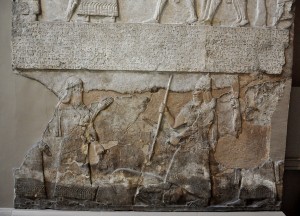
The Deportation Of Israel By Tiglath-Pileser
The kings of Israel after Menahem were Pekahiah (737-736BC) and Pekah (735-732BC). The biblical account in 2 Kings 15:22 states the Pekahiah became king over Israel after Menahem, and then after Pekahiah Pekah became king over Israel (2 Kings 15:27 ). The transition from Pekah to Hoshea is recorded by both the Assyrian records of Tiglath-Pileser III and the record in 2 Kings 15:29.
The biblical account states that Piglath came in and captured Ijon, Abel-beth-maacah, Janoah, Kedesh, Hazor, Gilead, Galilee, all the land of Naphtali, then carried them off to Assyria.
In the time of Pekah king of Israel, Tiglath-Pileser king of Assyria came and took Ijon,Abel Beth Maakah, Janoah, Kedesh and Hazor. He took Gilead and Galilee, including all the land of Naphtali, and deported the people to Assyria.
(2 Kings 15:29 NIV)
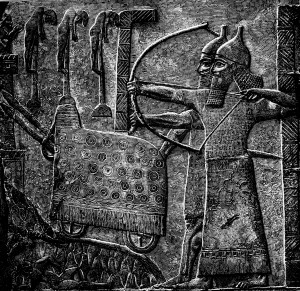
The account found in the Assyrian record states that Piglath carried away the House of Israel with their auxiliary armies, and also many possessions. He then installed Hoshea as king. The last part is where the record in 2 Kings departs from the story. In 2 Kings 15:30, the author states that Hoshea conspired against Pekah to become king.
Then Hoshea son of Elah conspired against Pekah son of Remaliah. He attacked and assassinated him, and then succeeded him as king in the twentieth year of Jotham son of Uzziah. (2 Kings 15:30 NIV)
While this might seem like a contradiction, it is entirely possible that both accounts are correct if the reason why Hoshea was installed by Tiglath was because he betrayed Pekah for him.
2 Kings 16:7-17:41 tells the gruesome story of the collapse of Israel. Tiglath-Pileser was replaced as king in 727BC, by Shalmaneser V. It was right in the middle of Hoshea’s vassal-rule that Shalmaneser he took the throne, and 2 Kings 17:3-5 states that Israel was still paying tribute to Assyria. In one year Hoshea conspired against Shalmaneser, so the king of Egypt did not pay his tribute. In response Shalmaneser besieged Samaria for three years, and invaded the entire land of Israel. In 2 Kings 17:6, the author of Kings records that Samaria was captured and Israel was carried away into exile.
In the ninth year of Hoshea, the king of Assyria captured Samaria and deported the Israelites to Assyria. He settled them in Halah, in Gozan on the Habor River and in the towns of the Medes. (2 Kings 17:6 NIV)
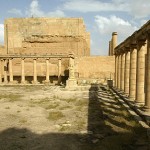 Inscriptions From Sargon’s Palace and the Sargon Cylinder
Inscriptions From Sargon’s Palace and the Sargon Cylinder
The deportation was not instantaneous though. It is likely Sargon II, who succeeded Shalmaneser in 721BC, that continued to besiege and carry away exiles from the land of Israel. Sargon is only mentioned once in the Bible, but his palace inscriptions mention Israel multiple times, as does a cylinder with his war annals.
At the beginning of my royal rule, I…the town of the Samarians I besieged, conquered (2 Lines destroyed) [for the god…] who let me achieve this my triumph… I led away as prisoners [27,290 inhabitants of it (and) equipped from among them (soldiers to man)] 50 chariots for my royal corps…. The town I rebuilt better than it was before and settled therein people from countries which I had conquered. I placed an officer of mine as governor over them and imposed upon them tribute as is customary for Assyrian citizens. (Nimrud Prism IV 25-41)
Isaiah 20:1 states that in the same year Sargon’s commander came to Ashdod, he captured it.
In the year that the supreme commander, sent by Sargon king of Assyria, came to Ashdod and attacked and captured it. (Isaiah 20:1 NIV)
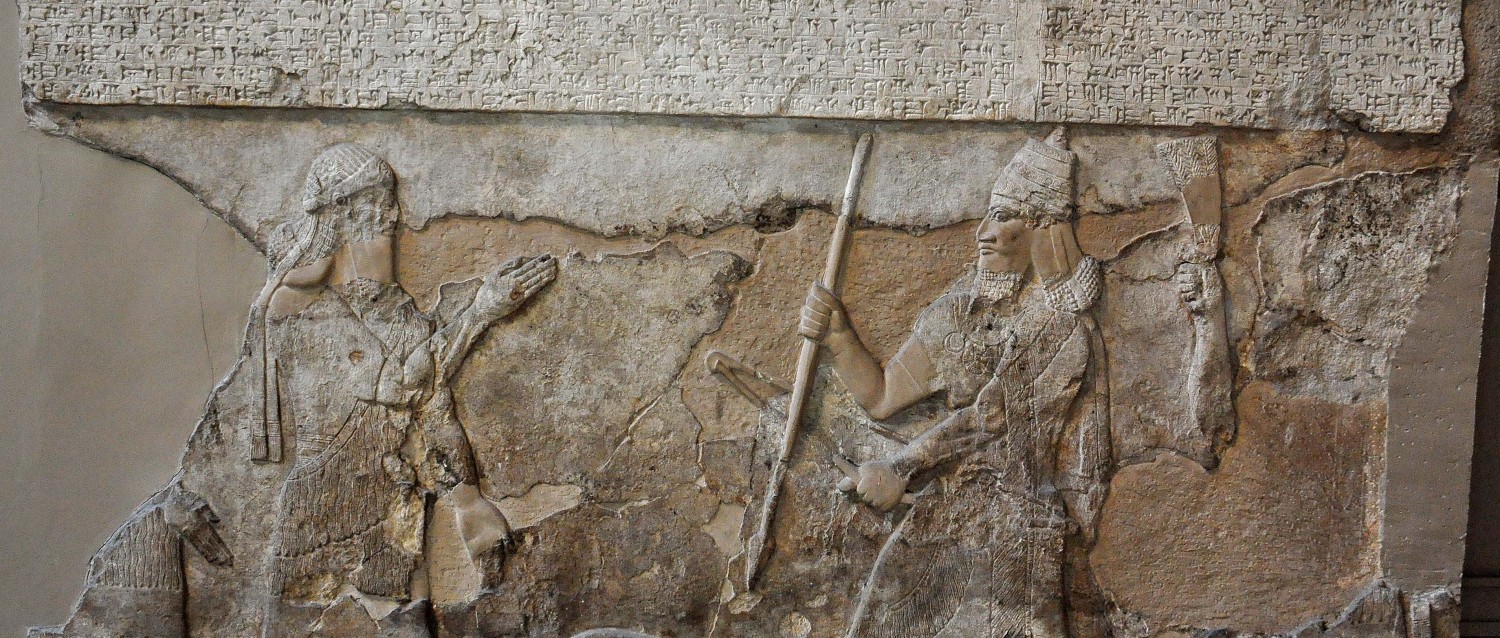


5 thoughts on “Where Archaeology Meets The Bible: Middle Babylonian Period [1000 – 625 BCE]”